Stefano Cassani, Simona Kovarich, Ester Papa, Partha Pratim Roy, Magnus Rahmberg, Sara Nilsson, Ullrika Sahlin, Nina Jeliazkova, Nikolay Kochev, Ognyan Pukalov, Igor V. Tetko, Stefan Brandmaier, Mojca Kos Durjava7 Boris Kolar, Willie Peijnenburg and Paola Gramatica
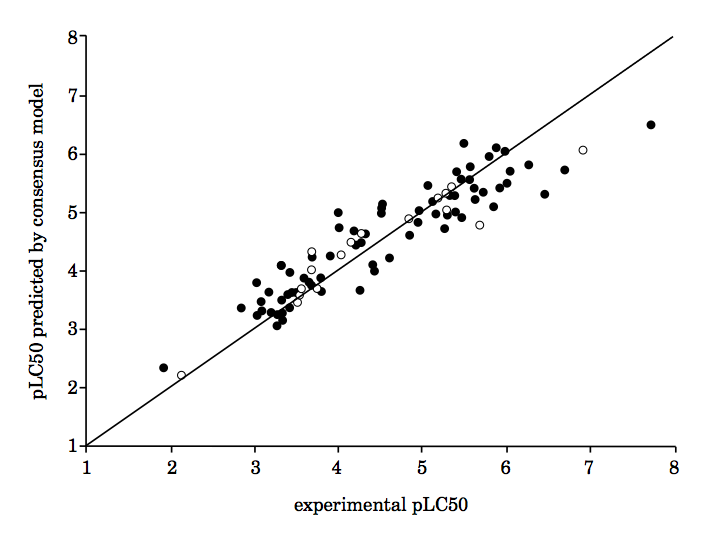 QSAR regression models of the toxicity of triazoles and benzotriazoles ([B]TAZs) to an alga (Pseudokirchneriella subcapitata), Daphnia magna and a fish (Onchorhynchus mykiss), were developed by five partners in the FP7-EU Project, CADASTER. The models were developed by different methods Ordinary Least Squares (OLS), Partial Least Squares (PLS), Bayesian regularised regression and Associative Neural Network (ASNN) — by using various molecular descriptors (DRAGON, PaDEL-Descriptor and QSPRTHESAURUS web). In addition, different procedures were used for variable selection, validation and applicability domain inspection. The predictions of the models developed, as well as those obtained in a consensus approach by averaging the data predicted from each model, were compared with the results of experimental tests that were performed by two CADASTER partners. The individual and consensus models were able to correctly predict the toxicity classes of the chemicals tested in the CADASTER project, confirming the utility of the QSAR approach. The models were also used for the prediction of aquatic toxicity of over 300 (B)TAZs, many of which are included in the REACH pre-registration list, and were without experimental data. This highlights the importance of QSAR models for the screening and prioritisation of untested chemicals, in order to reduce and focus experimental testing.
Read more
QSAR regression models of the toxicity of triazoles and benzotriazoles ([B]TAZs) to an alga (Pseudokirchneriella subcapitata), Daphnia magna and a fish (Onchorhynchus mykiss), were developed by five partners in the FP7-EU Project, CADASTER. The models were developed by different methods Ordinary Least Squares (OLS), Partial Least Squares (PLS), Bayesian regularised regression and Associative Neural Network (ASNN) — by using various molecular descriptors (DRAGON, PaDEL-Descriptor and QSPRTHESAURUS web). In addition, different procedures were used for variable selection, validation and applicability domain inspection. The predictions of the models developed, as well as those obtained in a consensus approach by averaging the data predicted from each model, were compared with the results of experimental tests that were performed by two CADASTER partners. The individual and consensus models were able to correctly predict the toxicity classes of the chemicals tested in the CADASTER project, confirming the utility of the QSAR approach. The models were also used for the prediction of aquatic toxicity of over 300 (B)TAZs, many of which are included in the REACH pre-registration list, and were without experimental data. This highlights the importance of QSAR models for the screening and prioritisation of untested chemicals, in order to reduce and focus experimental testing.
Read more
 An open access issue of the ATLA journal (Alternatives to Lab Animals) has been published, containing the materials of the CADASTER workshop in Munich. These materials summarize the expertise of all participants by providing clear guidelines on how to use applicability domain and experimental design to select an informative set of molecules, how to develop models and to estimate their applicability domain, and how to integrate different testing strategies following a critical analysis of four case studies considered in the CADASTER grant. The issue contains of eight articles, an editorial of Marc T. Cronin and a preface of project coordinator Willie Peijnenburg and Igor V. Tetko.
An open access issue of the ATLA journal (Alternatives to Lab Animals) has been published, containing the materials of the CADASTER workshop in Munich. These materials summarize the expertise of all participants by providing clear guidelines on how to use applicability domain and experimental design to select an informative set of molecules, how to develop models and to estimate their applicability domain, and how to integrate different testing strategies following a critical analysis of four case studies considered in the CADASTER grant. The issue contains of eight articles, an editorial of Marc T. Cronin and a preface of project coordinator Willie Peijnenburg and Igor V. Tetko.
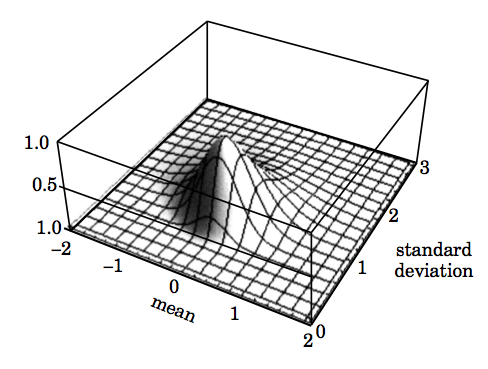 In environmental risk assessment, Species Sensitivity Distributions (SSDs) can be applied to estimate a PNEC (Predicted No-Effect Concentration) for a chemical substance, when sufficient data on species toxicities are available. The European Chemicals Agency (ECHA) recommendation is 10 biological species. The question addressed in this paper, is whether QSAR-predicted toxicities can be included in SSDbased PNEC estimates, and whether any modifications need to be made to account for the uncertainty in the QSAR-model estimates. This problem is addressed from a probabilistic modelling point of view. From classical analysis of variation (ANOVA), we review how the error-in-data SSD problem is similar to separation into between-group and within-group variance. ECHA guidance suggests averaging similar endpoint data for a species, which is consistent with group means, as in ANOVA. This exercise reveals that error-indata reduces the estimation of the between species variation, i.e. the SSD variance, rather than enlarging it. A Bayesian analysis permits the assessment of the uncertainty of the SSD mean and variance parameters for given values of mean species toxicity error. This requires a hierarchical model. Prototyping this model for an artificial five-species data set seems to suggest that the influence of data error is relatively minor. Moreover, when neglecting this data error, a slightly conservative estimate of the SSD results. Hence, we suggest including (model-predicted) data as model point estimates and handling the SSD as usual. The Bayesian simulation of the error-in-data SSD leads to predictive distributions, being an average of posterior spaghetti plot densities or cumulative distributions. We derive new predictive extrapolation constants with several improvements over previous median uncertainty log10HC5 estimates, in that they are easily calculable from spreadsheet Student-t functions and based on a more realistic uniform prior for the SSD standard deviation. Other advantages are that they are single-number extrapolation constants and they are more sensitive to small sample size.
In environmental risk assessment, Species Sensitivity Distributions (SSDs) can be applied to estimate a PNEC (Predicted No-Effect Concentration) for a chemical substance, when sufficient data on species toxicities are available. The European Chemicals Agency (ECHA) recommendation is 10 biological species. The question addressed in this paper, is whether QSAR-predicted toxicities can be included in SSDbased PNEC estimates, and whether any modifications need to be made to account for the uncertainty in the QSAR-model estimates. This problem is addressed from a probabilistic modelling point of view. From classical analysis of variation (ANOVA), we review how the error-in-data SSD problem is similar to separation into between-group and within-group variance. ECHA guidance suggests averaging similar endpoint data for a species, which is consistent with group means, as in ANOVA. This exercise reveals that error-indata reduces the estimation of the between species variation, i.e. the SSD variance, rather than enlarging it. A Bayesian analysis permits the assessment of the uncertainty of the SSD mean and variance parameters for given values of mean species toxicity error. This requires a hierarchical model. Prototyping this model for an artificial five-species data set seems to suggest that the influence of data error is relatively minor. Moreover, when neglecting this data error, a slightly conservative estimate of the SSD results. Hence, we suggest including (model-predicted) data as model point estimates and handling the SSD as usual. The Bayesian simulation of the error-in-data SSD leads to predictive distributions, being an average of posterior spaghetti plot densities or cumulative distributions. We derive new predictive extrapolation constants with several improvements over previous median uncertainty log10HC5 estimates, in that they are easily calculable from spreadsheet Student-t functions and based on a more realistic uniform prior for the SSD standard deviation. Other advantages are that they are single-number extrapolation constants and they are more sensitive to small sample size.
 QSAR regression models of the toxicity of triazoles and benzotriazoles ([B]TAZs) to an alga (Pseudokirchneriella subcapitata), Daphnia magna and a fish (Onchorhynchus mykiss), were developed by five partners in the FP7-EU Project, CADASTER. The models were developed by different methods Ordinary Least Squares (OLS), Partial Least Squares (PLS), Bayesian regularised regression and Associative Neural Network (ASNN) — by using various molecular descriptors (DRAGON, PaDEL-Descriptor and QSPRTHESAURUS web). In addition, different procedures were used for variable selection, validation and applicability domain inspection. The predictions of the models developed, as well as those obtained in a consensus approach by averaging the data predicted from each model, were compared with the results of experimental tests that were performed by two CADASTER partners. The individual and consensus models were able to correctly predict the toxicity classes of the chemicals tested in the CADASTER project, confirming the utility of the QSAR approach. The models were also used for the prediction of aquatic toxicity of over 300 (B)TAZs, many of which are included in the REACH pre-registration list, and were without experimental data. This highlights the importance of QSAR models for the screening and prioritisation of untested chemicals, in order to reduce and focus experimental testing.
QSAR regression models of the toxicity of triazoles and benzotriazoles ([B]TAZs) to an alga (Pseudokirchneriella subcapitata), Daphnia magna and a fish (Onchorhynchus mykiss), were developed by five partners in the FP7-EU Project, CADASTER. The models were developed by different methods Ordinary Least Squares (OLS), Partial Least Squares (PLS), Bayesian regularised regression and Associative Neural Network (ASNN) — by using various molecular descriptors (DRAGON, PaDEL-Descriptor and QSPRTHESAURUS web). In addition, different procedures were used for variable selection, validation and applicability domain inspection. The predictions of the models developed, as well as those obtained in a consensus approach by averaging the data predicted from each model, were compared with the results of experimental tests that were performed by two CADASTER partners. The individual and consensus models were able to correctly predict the toxicity classes of the chemicals tested in the CADASTER project, confirming the utility of the QSAR approach. The models were also used for the prediction of aquatic toxicity of over 300 (B)TAZs, many of which are included in the REACH pre-registration list, and were without experimental data. This highlights the importance of QSAR models for the screening and prioritisation of untested chemicals, in order to reduce and focus experimental testing.
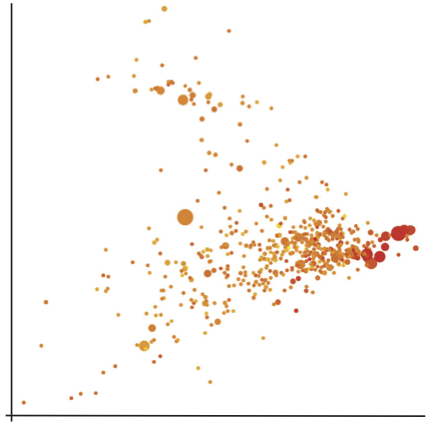 The importance of reliable methods for representative sub-sampling in terms of experimental design and risk assessment within the European Registration, Evaluation, Authorisation and Restriction of Chemicals (REACH) system is crucial. We developed experimental design approaches, by utilising predicted properties and the ‘distance to model’ parameter, to estimate the benefits of certain compounds to the quality of a resulting model. A statistical evaluation of four regression data sets and one classification data set showed that the adaptive concept of iteratively refining the representation of the chemical space contributes to a more efficient and more reliable selection in comparison to traditional approaches. The evaluation of compounds with regard to the uncertainty and the correlation of prediction is beneficial, and in particular, for regression data sets of sufficient size, whereas the use of predicted properties to define the chemical space is beneficial for classification models.
The importance of reliable methods for representative sub-sampling in terms of experimental design and risk assessment within the European Registration, Evaluation, Authorisation and Restriction of Chemicals (REACH) system is crucial. We developed experimental design approaches, by utilising predicted properties and the ‘distance to model’ parameter, to estimate the benefits of certain compounds to the quality of a resulting model. A statistical evaluation of four regression data sets and one classification data set showed that the adaptive concept of iteratively refining the representation of the chemical space contributes to a more efficient and more reliable selection in comparison to traditional approaches. The evaluation of compounds with regard to the uncertainty and the correlation of prediction is beneficial, and in particular, for regression data sets of sufficient size, whereas the use of predicted properties to define the chemical space is beneficial for classification models.
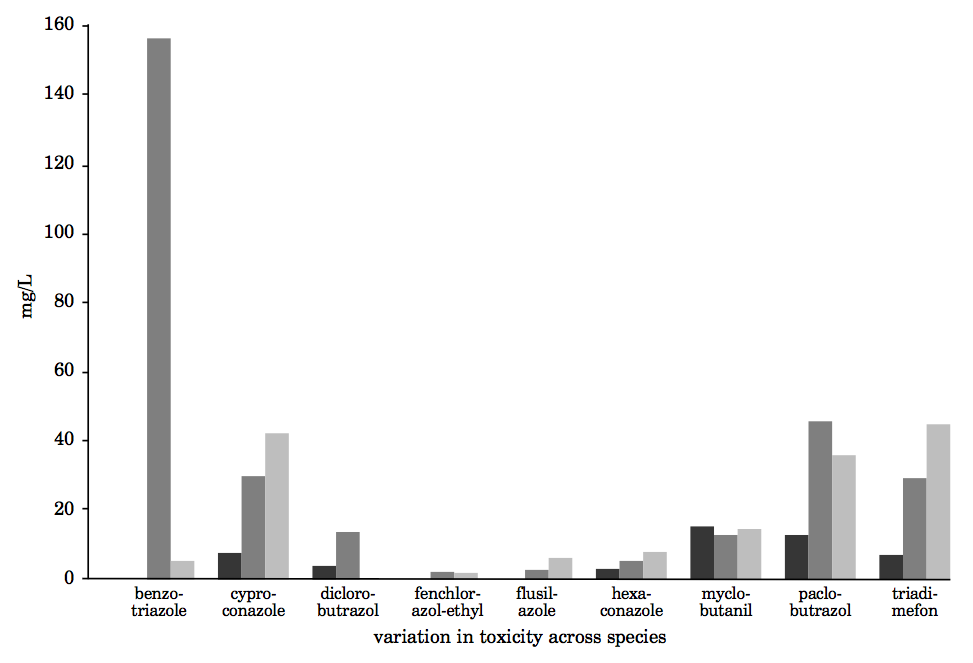 The environmental fate and effects of triazoles and benzotriazoles are of concern within the context of chemical regulation. As part of an intelligent testing strategy, experimental tests were performed on endpoints that are relevant for risk assessment. The experimental tests included the assessment of ecotoxicity to an alga, a daphnid and zebrafish embryos, and the assessment of ready biodegradability. Triazole and benzotriazole compounds were selected for testing, based on existing toxicity data for vertebrate and invertebrate species, as well as on the principal component analysis of molecular descriptors aimed at selecting the minimum number of test compounds in order to maximise the chemical domain spanned for both compound classes. The experimental results show that variation in the toxicities of triazoles and benzotriazole across species was relatively minor; in general, the largest factor was approximately 20. The study conducted indicated that triazoles are not readily biodegradable.
The environmental fate and effects of triazoles and benzotriazoles are of concern within the context of chemical regulation. As part of an intelligent testing strategy, experimental tests were performed on endpoints that are relevant for risk assessment. The experimental tests included the assessment of ecotoxicity to an alga, a daphnid and zebrafish embryos, and the assessment of ready biodegradability. Triazole and benzotriazole compounds were selected for testing, based on existing toxicity data for vertebrate and invertebrate species, as well as on the principal component analysis of molecular descriptors aimed at selecting the minimum number of test compounds in order to maximise the chemical domain spanned for both compound classes. The experimental results show that variation in the toxicities of triazoles and benzotriazole across species was relatively minor; in general, the largest factor was approximately 20. The study conducted indicated that triazoles are not readily biodegradable.
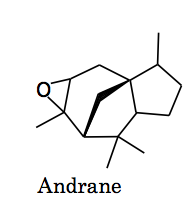 Read-across as a non-animal testing alternative for the generation of risk assessment data can be useful in those cases where quantitative structure–activity relationship (QSAR) models are not available, or are less well developed. This paper provides read-across case studies for the estimation of the aquatic toxicity of five different fragrance substances, and proposes a pragmatic approach for expressing uncertainty in read-across estimates. The aquatic toxicity estimates and their uncertainties are subsequently used to estimate fresh water compartment Predicted No-Effect Concentrations (PNECs), with their two-sided 90% Confidence Intervals (CIs). These PNECs can be used directly in risk assessment. The results of the musk fragrance read-across cases (musk xylene, musk ketone and galaxolide) are compared to experimentally derived PNEC values. The read-across estimates made by using similarity in a hypothesised mechanism of action for (acute) toxicity of musk xylene gave a PNEC of 2μg/L (90% CI 0.0004–13.5μg/L) with the Species Sensitivity Distribution (SSD) approach. This estimated value is 1.8 times above the experimentally-based fresh water PNEC of 1.1μg/L. For musk ketone and galaxolide, the PNEC values based on the SSD approach and employing a toxicity mechanism-based read-across were 2.0 times greater, and 4.9 times below the experimentally derived PNEC values, respectively.
Read-across as a non-animal testing alternative for the generation of risk assessment data can be useful in those cases where quantitative structure–activity relationship (QSAR) models are not available, or are less well developed. This paper provides read-across case studies for the estimation of the aquatic toxicity of five different fragrance substances, and proposes a pragmatic approach for expressing uncertainty in read-across estimates. The aquatic toxicity estimates and their uncertainties are subsequently used to estimate fresh water compartment Predicted No-Effect Concentrations (PNECs), with their two-sided 90% Confidence Intervals (CIs). These PNECs can be used directly in risk assessment. The results of the musk fragrance read-across cases (musk xylene, musk ketone and galaxolide) are compared to experimentally derived PNEC values. The read-across estimates made by using similarity in a hypothesised mechanism of action for (acute) toxicity of musk xylene gave a PNEC of 2μg/L (90% CI 0.0004–13.5μg/L) with the Species Sensitivity Distribution (SSD) approach. This estimated value is 1.8 times above the experimentally-based fresh water PNEC of 1.1μg/L. For musk ketone and galaxolide, the PNEC values based on the SSD approach and employing a toxicity mechanism-based read-across were 2.0 times greater, and 4.9 times below the experimentally derived PNEC values, respectively.
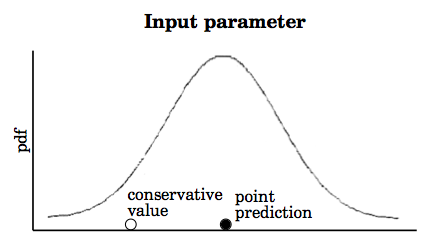 Chemical regulation allows non-in vivo testing (i.e. in silico-derived and in vitro-derived) information to replace experimental values from in vivo studies in hazard and risk assessments. Although non-in vitro testing information on chemical activities or properties is subject to added uncertainty as compared to in vivo testing information, this uncertainty is commonly not (fully) taken into account. Considering uncertainty in predictions from quantitative structure–activity relationships (QSARs), which are a form of non-in vivo testing information, may improve the way that QSARs support chemical safety assessment under the EU Registration, Evaluation, Authorisation and Restriction of Chemicals (REACH) system. We argue that it is useful to consider uncertainty in QSAR predictions, as it: a) supports rational decision-making; b) facilitates cautious risk management; c) informs uncertainty analysis in probabilistic risk assessment; d) may aid the evaluation of QSAR predictions in weight-of-evidence approaches; and e) provides a probabilistic model to verify the experimental data used in risk assessment. The discussion is illustrated by using case studies of QSAR integrated hazard and risk assessment from the EU-financed CADASTER project.
Chemical regulation allows non-in vivo testing (i.e. in silico-derived and in vitro-derived) information to replace experimental values from in vivo studies in hazard and risk assessments. Although non-in vitro testing information on chemical activities or properties is subject to added uncertainty as compared to in vivo testing information, this uncertainty is commonly not (fully) taken into account. Considering uncertainty in predictions from quantitative structure–activity relationships (QSARs), which are a form of non-in vivo testing information, may improve the way that QSARs support chemical safety assessment under the EU Registration, Evaluation, Authorisation and Restriction of Chemicals (REACH) system. We argue that it is useful to consider uncertainty in QSAR predictions, as it: a) supports rational decision-making; b) facilitates cautious risk management; c) informs uncertainty analysis in probabilistic risk assessment; d) may aid the evaluation of QSAR predictions in weight-of-evidence approaches; and e) provides a probabilistic model to verify the experimental data used in risk assessment. The discussion is illustrated by using case studies of QSAR integrated hazard and risk assessment from the EU-financed CADASTER project.
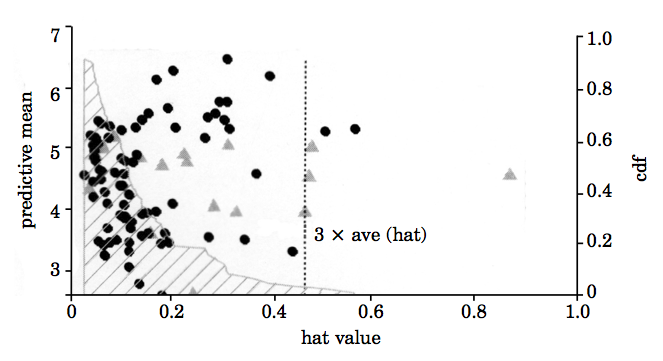 It is relevant to consider uncertainty in individual predictions when quantitative structure–activity (or property) relationships (QSARs) are used to support decisions of high societal concern. Successful communication of uncertainty in the integration of QSARs in chemical safety assessment under the EU Registration, Evaluation, Authorisation and Restriction of Chemicals (REACH) system can be facilitated by a common understanding of how to define, characterise, assess and evaluate uncertainty in QSAR predictions. A QSAR prediction is, compared to experimental estimates, subject to added uncertainty that comes from the use of a model instead of empirically-based estimates. A framework is provided to aid the distinction between different types of uncertainty in a QSAR prediction: quantitative, i.e. for regressions related to the error in a prediction and characterised by a predictive distribution; and qualitative, by expressing our confidence in the model for predicting a particular compound based on a quantitative measure of predictive reliability. It is possible to assess a quantitative (i.e. probabilistic) predictive distribution, given the supervised learning algorithm, the underlying QSAR data, a probability model for uncertainty and a statistical principle for inference. The integration of QSARs into risk assessment may be facilitated by the inclusion of the assessment of predictive error and predictive reliability into the “unambiguous algorithm”, as outlined in the second OECD principle.
It is relevant to consider uncertainty in individual predictions when quantitative structure–activity (or property) relationships (QSARs) are used to support decisions of high societal concern. Successful communication of uncertainty in the integration of QSARs in chemical safety assessment under the EU Registration, Evaluation, Authorisation and Restriction of Chemicals (REACH) system can be facilitated by a common understanding of how to define, characterise, assess and evaluate uncertainty in QSAR predictions. A QSAR prediction is, compared to experimental estimates, subject to added uncertainty that comes from the use of a model instead of empirically-based estimates. A framework is provided to aid the distinction between different types of uncertainty in a QSAR prediction: quantitative, i.e. for regressions related to the error in a prediction and characterised by a predictive distribution; and qualitative, by expressing our confidence in the model for predicting a particular compound based on a quantitative measure of predictive reliability. It is possible to assess a quantitative (i.e. probabilistic) predictive distribution, given the supervised learning algorithm, the underlying QSAR data, a probability model for uncertainty and a statistical principle for inference. The integration of QSARs into risk assessment may be facilitated by the inclusion of the assessment of predictive error and predictive reliability into the “unambiguous algorithm”, as outlined in the second OECD principle.
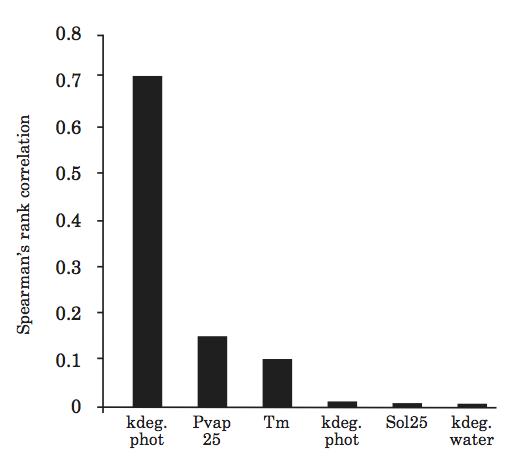 The prioritisation of chemical compounds is important for the identification of those chemicals that represent the highest threat to the environment. As part of the CADASTER project (http://www.cadaster.eu), we developed an online web tool that allows the calculation of the environmental risk of chemical compounds from a web interface. The environmental fate of compounds in the aquatic compartment is assessed by using the SimpleBox model, while adverse effects on the aquatic compartment are assessed by the Species Sensitivity Distribution approach. The main purpose of this web tool is to exemplify the use of quantitative structure–activity relationships (QSARs) to support risk assessment. A case study of QSAR integrated risk assessment of 209 polybrominated diphenyl ethers (PBDEs) demonstrates the treatment and influence of uncertainty in the predicted physicochemical and toxicity parameters in probabilistic risk assessment.
The prioritisation of chemical compounds is important for the identification of those chemicals that represent the highest threat to the environment. As part of the CADASTER project (http://www.cadaster.eu), we developed an online web tool that allows the calculation of the environmental risk of chemical compounds from a web interface. The environmental fate of compounds in the aquatic compartment is assessed by using the SimpleBox model, while adverse effects on the aquatic compartment are assessed by the Species Sensitivity Distribution approach. The main purpose of this web tool is to exemplify the use of quantitative structure–activity relationships (QSARs) to support risk assessment. A case study of QSAR integrated risk assessment of 209 polybrominated diphenyl ethers (PBDEs) demonstrates the treatment and influence of uncertainty in the predicted physicochemical and toxicity parameters in probabilistic risk assessment.